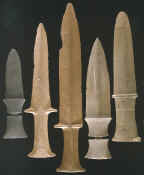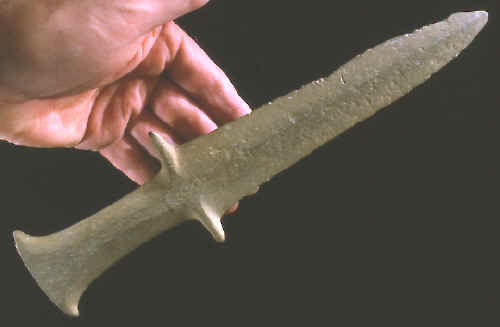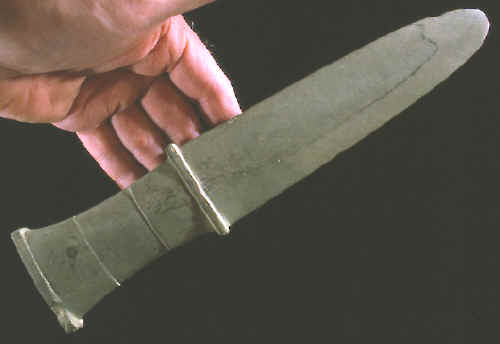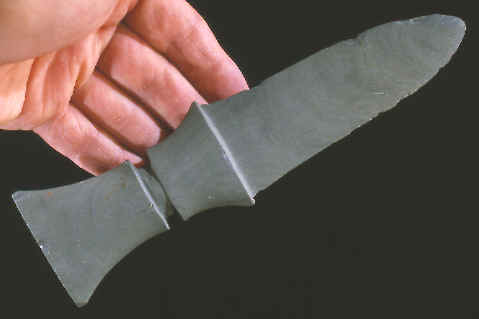|
||
|
The Plain Pottery people lived in small villages of pit-dwellings, farming rice in southern Korea and raising pigs and cultivating millet in northern Korea. These people used both cist burials (graves lined with stone slabs) and large dolmens (table-like structures consisting of a huge cap stone and either short or tall supporting stones. |
||
|
Such dolmens are found at this time in an area extending from Liaoning Province in the southern part of Tunpei (Northeast), China, through the Korean peninsula, to northwestern Kyushu in western Japan. Cist burials are found more widely in the steppe zone, all associated with the spread of Bronze, and at the same time also in late Joman hunter-gatherer sites in northeastern Japan from about 1500 B.C. |
||
|
The appearance of the Plain Pottery culture in Korea is thought to reflect the expansion of the Yemaek Tungus from southern Tungpei and to be an eastern extension of the Sibero-Ordos bronze tradition, which in turn was the foundation of the militant nomadic cultures that developed in the steppes north of China in the last millennium B.C. At the same time, rice farming was spreading from the eastern coast of China to western Japan and southern Korea. Ground slate weapons are among the most characteristic artifacts of the culture that developed in the Korean peninsula under both the northern and the southern influences. Their appearance in western Japan at the time of the transition from foraging to rice farming there evidences part of the major Korean contribution to the foundation of later Japanese culture. |
||
|
"REFERENCES" 1991, Personal communications with Charles T. Keally |
||



